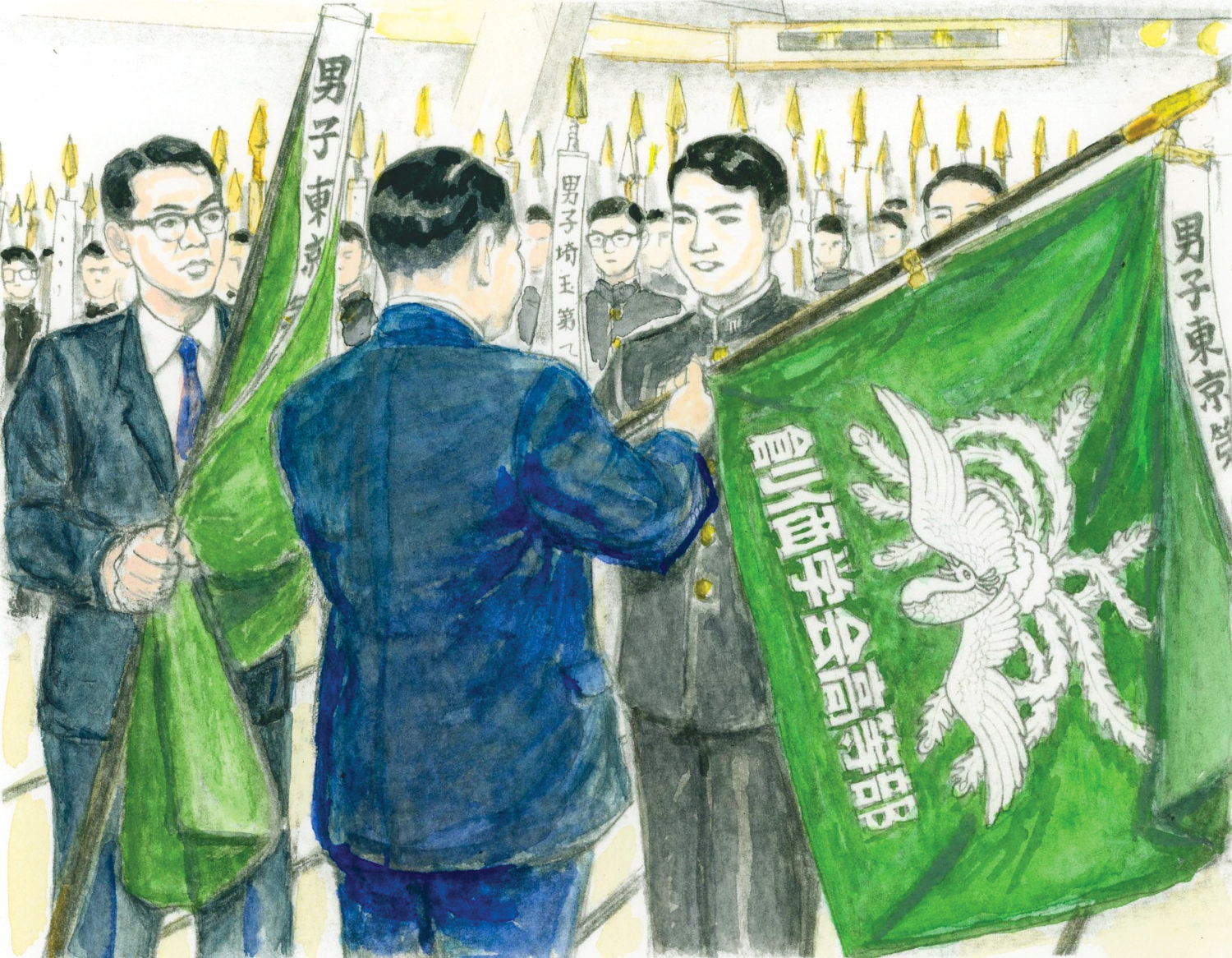Learn from the inspiring history of the junior high and high school divisions with monthly features excerpted from The New Human Revolution. In this installment, Ikeda Sensei, appearing as Shin’ichi Yamamoto, discusses founding new divisions for junior high and high school students. The following excerpt can be found in The New Human Revolution, vol. 9, pp. 79–82.
Part 1
Youth has limitless potential. It is alive with boundless hope, burning passion, and an overflowing desire for self-improvement. The youthful strength of the next generation is the infinite treasure of all humanity.
On June 1, 1964, a young men’s leaders meeting took place at the Taito Gymnasium in Tokyo. When Eisuke Akizuki, the youth leader, announced that a high school division and a junior high school division would be established within the youth division, the auditorium shook with applause. The high school division would be made up of high school students and be affiliated with the student division. The junior high school division would comprise students from the fifth grade through junior high and would be taken care of by chapter level members of the young men’s and young women’s divisions.
The high school students in the audience were particularly happy. At the time, high school students participated in Soka Gakkai activities as members of the youth division. It was not uncommon for them to have frontline leadership positions and be responsible for as many as ten members each.
The idea of establishing these new divisions had first been brought up to Shin’ichi Yamamoto about two months earlier. He was meeting with several of the top youth leaders. Goro Watari, the head of the student division, had proposed that to strengthen his division, a system be devised to provide encouragement to high school graduates preparing for college entrance examinations, as well as to high school seniors.
“This is a good suggestion for the graduates,” Shin’ichi said, “but as far as those who are still in high school, I don’t think we should limit it to seniors. Let’s come up with a plan to encourage all our high school students. Fostering high school students will become an increasingly important focus for Japanese society.” For a long time, Shin’ichi had been profoundly aware of the importance of fostering high school students, not only for the sake of the Soka Gakkai’s future, but for Japan as a whole.
Having high school students participate in the young men’s and young women’s divisions was valuable in that it enabled them to interact with people older than themselves and gave them inspiration in faith. But Shin’ichi thought it also important for high school students to have a forum for encouragement in their studies. He concluded that it would be best for them to have a division of their own.
“Given that we have a division for college students, it might be a good idea to create a separate one for high school students,” he said. “The postwar ‘baby boomers’ are now in
high school, and since there are so many of them, they represent a huge potential. The problem is that society today has no idea of how to tap that vast resource.”
• • •
One of the young men’s leaders said: “As a matter of fact, more and more junior high and upper grade elementary school students are saying they want to participate in the young men’s and young women’s divisions. Having grown up in the Soka Gakkai, these children have watched their parents joyfully exerting themselves in faith, and they are eager to do the same. Same with the high school students.
“But youth meetings usually occur on weeknights and often end around nine. This poses a problem for these students. I’d therefore like to propose that we also establish an independent group for these young people.”
Young men’s and young women’s activities were very attractive to younger children. By April, the young men’s division was rapidly approaching its goal for that year of 1.5 million members. Meanwhile, the young women’s division, aiming for 1 million, was also advancing with joy and vitality. Their efforts were conspicuous in every chapter and district, and they were the hope of all the other divisions. They were the face of the Soka Gakkai.
The younger children looked up to their seniors in the youth division. When asked what they would like to be when they grew up, many answered: “A young men’s division member!” or “A young women’s division member!” They also joined the brass band or the fife and drum corps to bide their time until they could participate as full-fledged members of these divisions.
“Yes, let’s consider forming a junior high division as well,” Shin’ichi said. “This is also an important point.
“Incidentally, I believe a recent white paper on youth focuses on the deepening problem of juvenile delinquency. How we educate and foster young people is crucial to the future of Japan. The Soka Gakkai is the only group that has the ability to address this issue.”
You are reading {{ meterCount }} of {{ meterMax }} free premium articles





